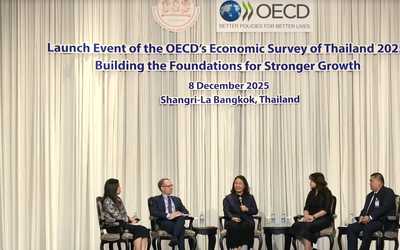Analysis of Changes in Thailand’s Income Distribution from 2013 to 2021 Using Growth Incidence and Delta Lorenz Curves
Abstract
The objective of this study is to analyze changes in the income distribution of Thailand between 2013 and 2019 and between 2019 and 2021. Using the growth incidence curve analysis and the delta Lorenz curve analysis developed by Ferreira et al. (2019), not only can we analyze changes in income distribution through its summary statistics, but we can also analyze the income level growth and income share of Thai households in every quantile of the distribution. We found that changes in Thailand’s inequality were different in these two time periods. There were heterogeneous income growths that reduced Thailand’s income inequality during 2013–2019. The improvement mainly comes from the structure effect, not the composition effect. On the other hand, the income growth incidences of middle- and upper-middle-income households worsened in 2019–2021. This caused a slight increase in income inequality, and it contributed to the structure effect as well. The impact of the government’s assistance programs is evaluated in both periods. The study found that these programs benefit lower quantile households more than upper quantile households, and hence they reduce income inequality effectively.









